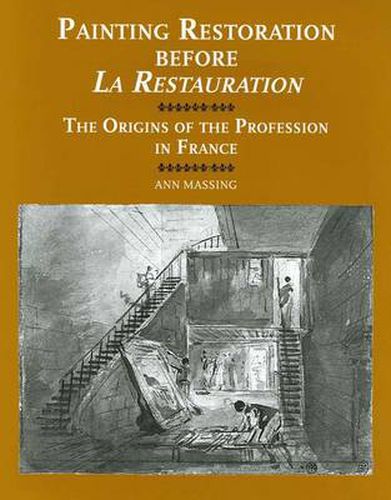Readings Newsletter
Become a Readings Member to make your shopping experience even easier.
Sign in or sign up for free!
You’re not far away from qualifying for FREE standard shipping within Australia
You’ve qualified for FREE standard shipping within Australia
The cart is loading…






During the latter half of the eighteenth century, especially the period around and just after the French Revolution, what was happening in France in the field of painting restoration influenced all of Europe. In 1750, the museum in the Luxembourg Palace in Paris was opened to the public, and it became necessary to display to the public paintings which had been in storage for years. In the following decades, King Louis XVI and his advisor, the Comte d'Angiviller, developed and enlarged the national collection of paintings. And with this came the need for painting restorers doing quality work - more than just the quick repairs as done by painters in the past - and several full-time painting restorers were employed. By the time the museum in the Louvre was opened to the public in 1793, in the midst of the French Revolution, the profession had been established. During the latter half of the eighteenth century, painting restoration techniques improved and French restorers began to travel to England and to other European countries more frequently, spreading their practical knowledge - especially about the lining and transfer of paintings. In Paris, a national concours was prepared to choose the most capable from a growing group of candidates, and in 1802 plans were drafted for a school of restoration. In this book, the lives and careers of several of the more well-documented painting restorers for the French Royal Collection are traced one-by-one - including as much as possible about their restoration techniques.
$9.00 standard shipping within Australia
FREE standard shipping within Australia for orders over $100.00
Express & International shipping calculated at checkout
During the latter half of the eighteenth century, especially the period around and just after the French Revolution, what was happening in France in the field of painting restoration influenced all of Europe. In 1750, the museum in the Luxembourg Palace in Paris was opened to the public, and it became necessary to display to the public paintings which had been in storage for years. In the following decades, King Louis XVI and his advisor, the Comte d'Angiviller, developed and enlarged the national collection of paintings. And with this came the need for painting restorers doing quality work - more than just the quick repairs as done by painters in the past - and several full-time painting restorers were employed. By the time the museum in the Louvre was opened to the public in 1793, in the midst of the French Revolution, the profession had been established. During the latter half of the eighteenth century, painting restoration techniques improved and French restorers began to travel to England and to other European countries more frequently, spreading their practical knowledge - especially about the lining and transfer of paintings. In Paris, a national concours was prepared to choose the most capable from a growing group of candidates, and in 1802 plans were drafted for a school of restoration. In this book, the lives and careers of several of the more well-documented painting restorers for the French Royal Collection are traced one-by-one - including as much as possible about their restoration techniques.